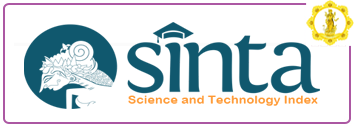Eksistensi Geguritan Sampik Ditinjau Dari Nilai Pendidikan Karakter Di Desa Ubung Kaja
DOI:
https://doi.org/10.25078/ds.v3i2.3097Keywords:
The character education, Ubung Kaja Village, Geguritan SampikAbstract
Balinese literature is a regional literature inherited from the ancestors that must be maintained and preserved by the people in Bali by adjusting Hindu religious values, one of which is Geguritan. One of the contents of this geguritan has a character education message, namely Geguritan Sampik. This Geguritan tells the story of a man and a woman named Sampik and Ingtai who fall in love until they vow to live as husband and wife for life. But when talking about the existence of geguritan in this day and age, it is increasingly receding people know and diligent as in the Ubung Kaja Village community. There are three problems in this study, namely (1) the narrative structure in Geguritan Sampik (2) character education in Geguritan Sampik (3) the existence of Geguritan Sampik in the community in Ubung Kaja Village. The theories used are (1) structuralism theory, (2) value theory (3) function theory. The study was conducted using qualitative methods. This study found the narrative structure of Geguritan Sampik and the study of character education in Geguritan Sampik. The narrative structure in this literary work includes Incident, plot, character and characterization, setting, theme, and mandate. Meanwhile, the character education obtained in Geguritan Sampik is religious, honest, hardworking, friendly/communicative, peace-loving, and responsible. The existence of Geguritan Sampik in the community in Ubung Kaja Village Environment is already receding because there are no performing arts that use this Geguritan Sampik such as drama gong, arja, and geguntangan.









